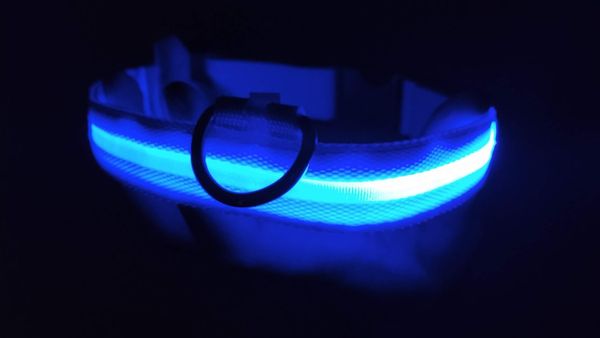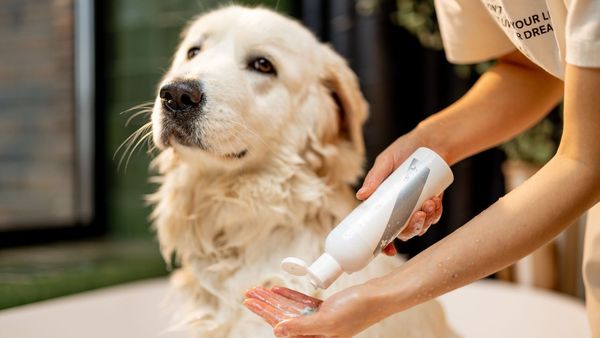If you're a pet owner, then you know how frustrating it can be to deal with fleas. Not only are they annoying, but they can also pose serious health risks for your furry friend. Flea collars are a common solution to this problem, but do they actually work?
When used properly, fleas collars do work. Some flea collars contain chemicals that repel fleas and ticks, while others release medication that kills fleas and eggs.
However, it's important to note that they are not a one-stop solution and should be used alongside other flea prevention methods, such as regular grooming and vacuuming.
Additionally, flea collars are not suitable for all dogs and can cause irritation or allergic reactions in some pets. It's always best to consult with your veterinarian before using any flea prevention product on your dog, as they can recommend the best options based on your pet's individual needs and health.
How long does it take for a flea collar to work?
It's important to note that the efficacy of the collar also depends on proper usage and the specific active ingredients used in the collar. Some collars release chemicals gradually over time, while others work by transferring the active ingredients to your pet's skin and fur.
Make sure to follow the manufacturer's instructions on proper fitting, placement, and duration of use to ensure the best results. Additionally, it's a good idea to consult with your veterinarian for advice on the most suitable flea prevention method for your pet.
Do flea collars work if they already have fleas?
Flea collars can help eliminate existing fleas on your pet, but their effectiveness may vary depending on the severity of the infestation and the type of collar used. Most of them are designed to either repel fleas or release chemicals that kill adult fleas and prevent the development of eggs and larvae. Click here to check the price of our top pick for dogs over 18 lbs. on Amazon.
If your pet already has fleas, it's important to take a comprehensive approach to flea control. In addition to using a collar, you may need to treat your pet with other flea-control products such as topical treatments, oral medications, or shampoos. Additionally, it's essential to thoroughly clean your home, including washing your pet's bedding, vacuuming carpets and upholstery, and treating outdoor areas where fleas may reside.
What are the negatives of flea collars?
They can be an effective method for controlling fleas on your pets, but there are some potential negatives to consider:
- Skin irritation: Some pets may experience skin irritation or allergies due to the chemicals used in the collars. This can cause itching, redness, or swelling around the neck area.
- Ineffective against heavy infestations: They may not be as effective in treating severe infestations compared to other methods, such as topical treatments or oral medications.
- Uneven distribution of active ingredients: The chemicals in some collars may not distribute evenly across your pet's body, potentially leaving some areas unprotected.
- Limited protection: They primarily target fleas around the neck and head area, which may leave other parts of your pet's body more susceptible to fleas.
- Potential hazards: If not fitted properly, a flea collar could pose a choking hazard or cause injury to your pet. Additionally, some may be toxic if ingested.
- Odor: Some have a strong chemical smell that can be bothersome to both pets and their owners.
- Environmental concerns: The chemicals used in flea collars can be harmful to the environment and other non-target animals, particularly if disposed of improperly.
Before choosing a flea collar for your pet, it's essential to weigh the potential negatives against the benefits and consult with your veterinarian for guidance on the most appropriate flea control method tailored to your pet's specific needs.
Do flea collars work by themselves?
Flea collars can provide some level of protection against fleas by themselves, but their effectiveness may vary depending on factors like the type and quality of the collar, the severity of the infestation, and your pet's individual needs.
In mild flea infestations, a collar might be sufficient to control the problem. However, in more severe cases or for pets with sensitive skin or allergies, a flea collar alone may not be enough. It might be necessary to use additional flea control methods such as topical treatments, oral medications, or flea shampoos to effectively combat the infestation.
Moreover, it's crucial to address the fleas in your pet's environment as well. This includes regularly cleaning your home, washing your pet's bedding, vacuuming carpets and upholstery, and treating outdoor areas where fleas might reside.
Consult with your veterinarian for guidance on the most effective flea control strategy for your pet, as they can recommend a combination of treatments tailored to your pet's specific needs.
Do Tick Collars Work?
A tick collar can be effective in repelling and killing ticks on your pets when used correctly. These collars usually contain active ingredients that are released slowly over time, providing protection against ticks for an extended period. Some tick collars also offer protection against fleas.
However, the effectiveness of a tick collar can vary depending on factors such as the brand, the type of active ingredients used, and proper usage. For a tick collar to work effectively, it's crucial to:
- Choose a high-quality tick collar from a reputable brand.
- Ensure the collar fits snugly around your pet's neck, with enough room to fit two fingers between the collar and your pet's neck.
- Replace the collar as recommended by the manufacturer, as the effectiveness might decrease over time.
It's important to note that a tick collar primarily protects the areas around your pet's head and neck. In some cases, additional tick prevention methods, such as topical treatments or oral medications, may be necessary to provide comprehensive protection.
Always consult with your veterinarian before using tick collars or any other tick prevention method to ensure it's suitable for your pet's specific needs and health conditions.
How long do dog flea & tick collars work for?
The duration of protection provided by a dog flea and tick collar depends on the brand and the active ingredients used. Most flea and tick collars offer protection for an extended period, usually ranging from 3 to 8 months. Some high-quality collars can even provide protection for up to 12 months.
It's essential to read the manufacturer's instructions on the packaging to determine the specific duration of protection offered by the collar. Additionally, ensure that the collar is fitted correctly and replaced as needed to maintain its effectiveness.
Always consult with your veterinarian for guidance on the most appropriate flea and tick prevention method for your pet, as they can recommend a product tailored to your dog's specific needs and lifestyle.
Are dog flea collars safe?
Dog flea collars can be safe when used correctly and according to the manufacturer's instructions. However, there are some potential concerns and precautions to consider:
- Skin irritation: Some dogs may experience skin irritation or allergies due to the chemicals used in flea collars. If your pet shows signs of discomfort, redness, or swelling around the neck area, remove the collar and consult your veterinarian.
- Toxicity: Some flea collars contain chemicals that could be toxic if ingested. Make sure the collar fits properly so your dog cannot chew on it, and monitor your pet for any signs of poisoning.
- Safety around other pets and children: Some flea collars can pose a risk to other pets or young children who may come into contact with them. Ensure that children and other pets do not play with or chew on the collar.
- Proper fit: A poorly fitted collar can pose a choking hazard or cause injury to your pet. Make sure the collar is snug but not too tight, with enough room to fit two fingers between the collar and your pet's neck.
It's essential to consult with your veterinarian before using a flea collar or any other flea prevention method to ensure it's suitable for your pet's specific needs and health conditions. Additionally, always follow the manufacturer's instructions for proper use and consider alternative flea control methods if your pet experiences adverse reactions to the collar.

What's better a flea collar or drops?
Deciding between a flea collar and drops (topical treatments) depends on your pet's specific needs, lifestyle, and your personal preferences. Each option has its advantages and drawbacks:
Flea Collar:
Advantages:
- Provides long-lasting protection, usually ranging from 3 to 8 months.
- Convenient and low-maintenance, as it doesn't require frequent application.
- Some collars offer both flea and tick protection.
Drawbacks:
- May not be as effective for severe infestations.
- Some dogs may experience skin irritation or allergies due to the chemicals used.
- Protection may not be evenly distributed across your pet's body.
Topical Treatments (Drops):
Advantages:
- Often provide faster and more comprehensive protection against fleas.
- Can be effective for treating existing infestations and preventing new ones.
- Some topical treatments also help with tick control, mites, and other parasites.
Drawbacks:
- Requires more frequent applications, usually every month.
- Can be messy to apply and may leave residue on your pet's fur.
- Pets should not be bathed or exposed to water for a certain period after application, which may affect the treatment's effectiveness.
It's essential to consult with your veterinarian to determine the most appropriate flea prevention method for your pet. They can recommend a product tailored to your dog's specific needs and ensure it's suitable for their health conditions. Additionally, you may need to use a combination of treatments to effectively control fleas in your pet's environment.
Will fleas in the house go away on their own?
Fleas in the house are unlikely to go away on their own without intervention. They can continue to reproduce and infest your home, causing discomfort for you and your pets.
To effectively eliminate fleas from your home, you'll need to take a comprehensive approach that targets not only adult fleas but also their eggs, larvae, and pupae.
Here are some steps to help you get rid of fleas in your home:
- Treat your pets: Use appropriate flea control products recommended by your veterinarian, such as a flea and tick collar, topical treatments, or oral medications. Ensure all pets in the household are treated simultaneously.
- Vacuum thoroughly: Regularly vacuum your carpets, rugs, upholstery, and any other areas where fleas may be hiding. This helps remove flea eggs, larvae, and pupae. Dispose of the vacuum bag or empty the canister outside immediately after each use.
- Wash pet bedding and soft furnishings: Launder your pet's bedding, blankets, and any removable covers on furniture in hot water to kill fleas and their eggs.
- Use flea control products for your home: Apply flea control sprays, powders, or foggers specifically designed for use in homes. Make sure to follow the manufacturer's instructions carefully and take necessary precautions to ensure the safety of your family and pets.
- Regularly clean and maintain outdoor areas: Keep your yard and outdoor spaces well-maintained to discourage flea populations from thriving. Remove debris, trim grass and bushes, and consider using outdoor flea control products if necessary.
- Monitor and repeat treatment if needed: Flea infestations can be persistent, so it's essential to monitor your home regularly and repeat treatments as needed until the problem is fully resolved.
Remember to consult with your veterinarian for guidance on the most effective flea control strategy for your pet and home.

Is It Possible To Completely Get Rid Of Fleas?
Yes, it is possible to completely get rid of fleas, but it requires a consistent and thorough approach to ensure all life stages of fleas (eggs, larvae, pupae, and adults) are eliminated.
Here are some essential steps to help you eradicate fleas from your pets and home:
- Treat your pets: Use veterinarian-recommended flea control products, such as flea collars, topical treatments, or oral medications. Ensure all pets in the household are treated simultaneously.
- Vacuum thoroughly: Regularly vacuum your carpets, rugs, upholstery, and any other areas where fleas may be hiding. Dispose of the vacuum bag or empty the canister outside immediately after each use.
- Wash pet bedding and soft furnishings: Launder your pet's bedding, blankets, and any removable covers on furniture in hot water to kill fleas and their eggs.
- Use flea control products for your home: Apply flea control sprays, powders, or foggers specifically designed for use in homes. Follow the manufacturer's instructions carefully and take necessary precautions to ensure the safety of your family and pets.
- Regularly clean and maintain outdoor areas: Keep your yard and outdoor spaces well-maintained to discourage flea populations from thriving. Remove debris, trim grass and bushes, and consider using outdoor flea control products if necessary.
- Monitor and repeat treatment if needed: Flea infestations can be persistent, so it's essential to monitor your home regularly and repeat treatments as needed until the problem is fully resolved.
By following these steps and working closely with your veterinarian, you can successfully eliminate fleas from your pets and home. However, it's important to remain vigilant and maintain proper flea prevention measures to avoid future infestations.
We hope this article has given you the information you need to make the best choice for your pooch.
And as always, get out there and Love Life!







